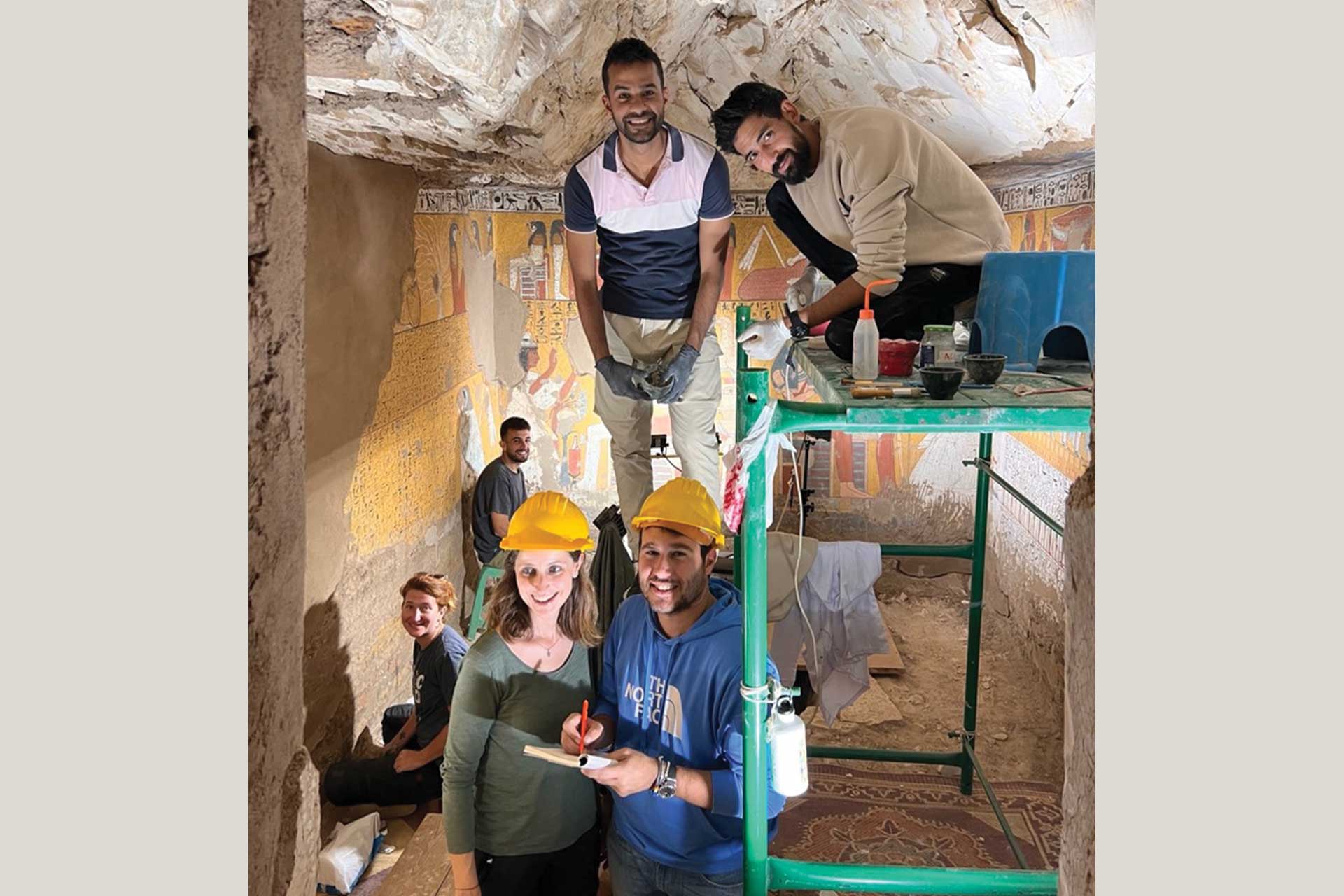Theban Tomb (TT) 265 of Amenemipet
Read about the TT 265 research project being conducted in Luxor, Egypt.
The TT 265 project (January 2024-present) takes place within the Study and Conservation Mission led at the site of Deir el-Medina (Luxor, Egypt) by the Institut Français d’Archéologie Orientale (IFAO). It aims to carry out the first epigraphic documentation, study, and publication of the decorative programme of the rock-cut Theban Tomb (TT) 265 of Amenemipet – a royal scribe and superintendent of workmen between the reigns of Seti I and Ramses II (early 13th century BCE). At the request of the Ministry of Tourism and Antiquities, TT 265 is currently being restored by an international team led by IFAO conservators prior to being opened to the public, which provides the perfect opportunity window for this project.

The image above shows the team working in TT 265: in the foreground, the co-directors of the project, Dr Silvia Zago and Dr Andrea Pillon; on the scaffolding, Mohamed Youssef Sedek (Chief Conservator and Restorer, Misr University for Science and Technology, Cairo) and Sayed el-Tayeb Abdul Rassul (Conservator and Restorer, IFAO); in the background, Manon Lefèvre – Conservator and Restorer (independent) and Abdel Rahman Sherif – Conservator and Restorer, Misr University for Science and Technology, Cairo. © I. Vranckx.
TT 265 is located in the western necropolis of Deir el-Medina, part of the broader area of Ancient Thebes and its necropolis (Luxor west bank), which has been on the UNESCO World Heritage list since 1979. The village of Deir el-Medina was established by the Egyptian state to house the community of artisans building and decorating the New Kingdom royal tombs in the Valley of the Kings and the Valley of the Queens between the 16th and the early 11th century BCE, together with their families.
The project, co-directed by Silvia Zago (University of Liverpool) and Andrea Pillon (IFAO, Université Lumière Lyon 2), seeks to illustrate the importance of TT 265 in the development and transmission of the Ramesside iconographic tradition and the Book of the Dead between royal tombs and contemporary Deir el-Medina tombs, an aspect that remains poorly understood.
-wall-of-TT-265.jpg)
The image above shows the back (west) wall of TT 265, with a humanised djed pillar in the middle and scenes of Amenemipet worshipping the gods at either side. © S. Zago.